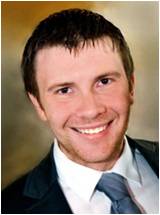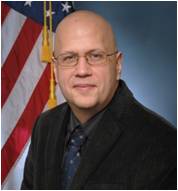
Lorenzo Lo Monte, Ph.D.
Radar Systems Engineer / Adjunct Professor
University of Dayton Research Institute
Sensors Systems pision
Intelligence, Surveillance and Reconnaissance Group
Wright-Patterson Air Force Base, OH
Dr. Lo Monte received the B.Sc. and M.Sc. (both summa cum laude) degrees in Telecommunications Engineering from University of Rome “Tor Vergata”, and his Ph.D. degree in Electrical Engineering from the University of Illinois at Chicago.
In 2005, he worked at Rheinmetall, designing phased arrays for anti-aircraft systems. In 2007, as a contractor for the U.S. Air Force Research Laboratory (AFRL), he conducted research on belowground imaging. In 2008 he worked as the antenna engineer at PCTEL Inc., developing a new family of WiMax antennas generating revenue above $1,000,000 at product launch. Dr. Lo Monte then became a military systems engineer at General Dynamics Information Technology, conducting research on RF Tomography and distributed sensing. He was a visiting scholar at Rensselaer Polytechnic Institute and Wright State University, and is currently an adjunct Professor at the University of Dayton. In January 2012 he joined University of Dayton Research Institute (UDRI), and became the principal investigator of a multi-million contract to modernize the AFRL tracking radar facility at Wright-Patterson Air Force Base. He has subsequently developed the first experimental MIMO radar system for use in the AFRL.
At UDRI, he is leading the design and development of a multi-million dollar laboratory aimed at establishing the first UAV verification and validation center for autonomy. This facility will include a chamber capable of emulating the real world RF environment for the UAV platforms under test. He is also partnering with small companies in developing novel radar systems for disparate applications, including the first ultra-low-cost air-traffic-control radar network for export to developing countries. He is also involved in many research topics such as GPR, resonance exploitation in Radar, RF/IR/EO RCS signature analysis, anechoic chamber development, as well as serving on NATO panels.
His expertise is based upon a combination of theory and experiment producing advanced radar system that meets client needs. He has experience in HF-to-W Band radar systems design and development. This includes the implementation of digital monopulse, tracking radar, high power amplification, surveillance radars, MIMO radar, multistatic radar, GPR, passive HF/VHF/UHF systems, RF/IR integration, and waveform persity concepts. He also has experience in antenna/microwave component design, computational electromagnetics, inverse scattering, digital signal processing, and electrical & mechanical CAD design.
Academically, Prof. Lo Monte has published over 50 peer-reviewed journal and conference papers and two book chapters. He teaches “Introduction to Radar” and “RF Systems Design” courses at the University of Dayton. He is also developing the first tomographic chamber that uses industrial robotic arms to rapidly distribute sensors in a 3D volume: this chamber is unique worldwide, and will provide the community with controlled multistatic datasets for SAR, ISAR, inverse scattering and near-field measurements.
Dr. Lo Monte has been very active in the IEEE community, serving as associate editor for the IEEE Sensors Journal and technical reviewer for more than 10 different IEEE societies. He volunteered for technical panels and organizing committees and served as judge for paper competitions. He also organized special sessions and was appointed as session chair in many transnational conferences.

Michael C. Wicks, Ph.D.
Ohio Scholar for Sensor Exploitation and Fusion
Professor of Electrical and Computer Engineering
University of Dayton
Distinguished Research Scientist
University of Dayton Research Institute
300 College Park Dayton, OH 45469
Senior Scientist US Air Force (retired)
Dr. Wicks is a leading research scientist in remote sensing, signal processing and systems engineering, with a current focus on distributed sensing and radio frequency technology. He has pursued a variety of research interests in his career, including: counter explosive sensor technology, cognitive radar and radio, space object sensing, deep earth sensing radar, multi-dimensional adaptive processing for airborne and space based radar, ultra-wideband radio and radar, passive and active multi-static systems, tomographic radar, and concealed weapons/contraband detection and carrier identification.
He pioneered the concept of knowledge-based signal processing and waveform persity, and has led national and international research teams on the design, development and fielding of novel algorithms, architectures and systems for remote sensing from space, air and surface platforms.
Dr. Wicks was the recipient of many professional honors and awards, including the IEEE Nathanson Award (1998), IEEE Fellow, U.S. Air Force Research Laboratory Fellow, IEEE Warren White Award for Excellence in Radar Engineering (2009) and the IEEE Dennis J. Picard Medal for Radar Technologies Applications (2013).
Dr. Wicks has published over 300 papers, reports, book chapters, books and US patents.
Distributed Sensing and RF Tomography
Many applications require imaging, shape reconstruction and material characterization of objects in clutter, including, for example, aircraft and airport surveillance, below ground imaging, foliage penetration (FOPEN), concealed weapons detection (CWD), crowd control, border control, through the wall surveillance (TWS), antenna and RCS measurements, as well as quality control, industrial automation, medical imaging and 3D/4D printing.
Recent advances in computing, computational sciences and radio frequency (RF) technology improved the potential for successful applications tomography to these challenging problems. Tomographic systems may be supported by a variety of technologies, but they all share one common feature in that they require viewing of the environment from a variety of angles. This is referred to as geometric persity of illumination and observation. The technology that supports geometric persity is based upon distributed sensors. For applications where sensing occurs using electromagnetic waves, the most common sensor is the radar. Distributed sensing systems employ a single aperture that is moved to form synthetic aperture radar (SAR) or numerous simultaneous fixed aperture systems.
RF tomography typically employs a distributed system of low-cost, reconfigurable electromagnetic transmit and receive antennas placed arbitrarily around the region of interest. In RF tomography transmitters generally radiate known waveforms (but sources of opportunity may also be exploited) while spatially distributed receivers sample of the scattered fields, and relay this information to a central processor. The distinctive attribute of RF tomography is its high resolution capabilities: sub-wavelength, range-independent, bandwidth-independent, resolution which is a function of the RF carrier frequency.
This tutorial will present the principles of RF tomography, and the relationship between classical electromagnetics, signal processing, and application-specific phenomenology as in medical imaging, SAR, and seismic sensing. This tutorial will include results from the most recent experiments and trends with many different applications. In particular, this tutorial will demonstrate theoretical concepts using experimental results obtained via one of the first dedicated tomographic chamber in the world.
